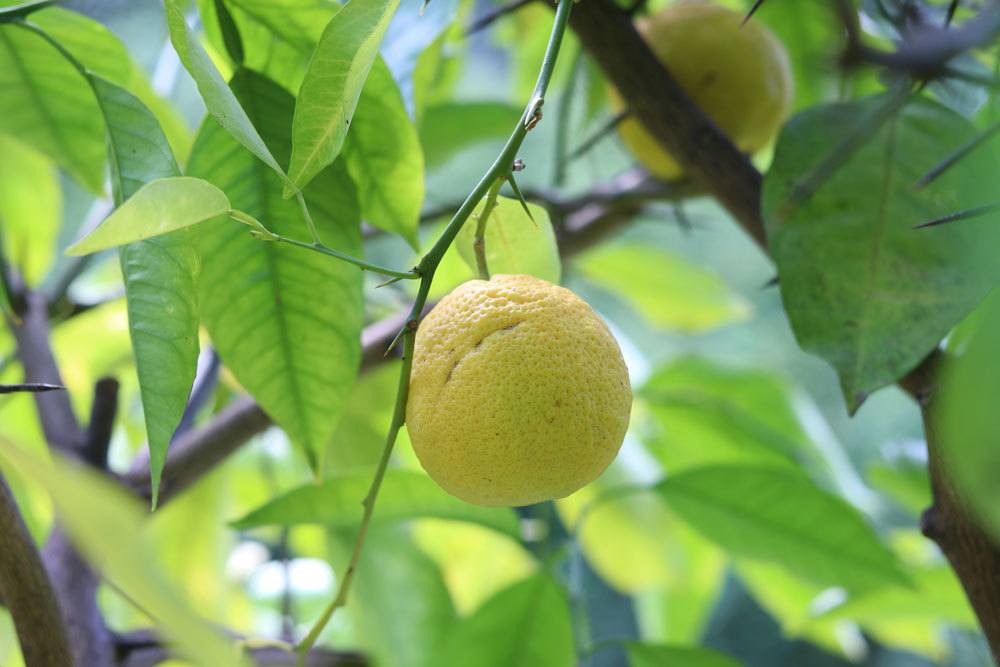Lemon trees are the classic among tropical plants. The fast-growing plants transform the home garden into a Mediterranean oasis. The evergreen splendor also has its price: lemon trees do not have frost hardiness and must be moved to safe winter quarters before temperatures drop in the fall. The age and size of the plants do not matter for this care measure. Frost damage to the citrus tree should be taken seriously, as it can have a lasting effect on the plant.
Frost damage
Recognize frost damage
Citrus limon, the botanical name of the lemon tree, is a fascinating plant. The number of passionate lovers of Mediterranean plants is constantly increasing. A significant advantage in cultivation: in the warm summer, tropical beauties do not mind a place in the rock garden or on the warm balcony. In late summer or early autumn, caution is required. The lemon tree does not tolerate cold or frost. Unlike native plants, the citrus tree has no natural protective mechanism against the damp and cold climate in our latitudes.
Staying in the garden until the last moment can turn out negatively for the plant.
Frost damage to the plant quickly becomes apparent:
- Leaves curl up and wither
- flowers and fruits fall off
- buds and young shoots die

How it looks inside the plant, it is difficult to judge. Immediately move the lemon tree to a protected location as soon as the above symptoms appear.
First aid measures
Older and large lemon trees can withstand temperatures around freezing for a short time without suffering any significant damage. Young and small specimens are more likely to lose out. If hardship has occurred, so that shoots and leaves are frostbitten, you should consider the following tips.
- the room should be bright
- avoid a full sun location
- temperatures between 6° – 12° C are optimal
- protect from cold
- root ball must not dry out
- avoid waterlogging
Heating
Tempting as it may seem, do not place the lemon tree in the immediate vicinity of active radiators. The Mediterranean plants love warmth. But in winter quarters, heating quickly dries out the substrate and also encourages spider mite infestation. The temptation is great to provide the citrus plant with all the amenities. Here it is necessary to be careful. The damage done by frost reveals itself only over time.

Pruning
Immediate pruning of obviously affected parts of the plant is not recommended. After all, many commercially available citrus trees are grafted. These specimens already form an abundance of flowers and fruits in the first years of life. The disadvantage: if you cut too deep, only the base remains intact. This grafting base almost always consists of another variety.
Patience is needed to get around this problem. Refrain from pruning and wait. The lemon tree takes a long time to recover from frostbite. Several months may pass before the first green shoots appear and new foliage is formed. Only then can you begin to generously remove the frostbitten parts of the plant. If after about a year there are no changes, most likely the roots are completely frozen. The plant is dead.
Care measures
Helpful care measures
After the formation of new shoots and leaves, it is easy to see the damage caused by frost. You can remove dead plant parts with sharp rose shears. Until the lemon tree shows itself again in full splendor and reliably forms flowers, several months can pass again.
The following points promote the growth of the plant:
- water with lime-free water
- fertilize from March to August
- regularly inspect for pest infestation

Avoid factors that could harm the plant and affect its health. There is nothing wrong with a stay in the garden in the warm season. Slowly accustom the saplings to direct sunlight. Discoloration on the leaves at this stage is often a sign of burning. These can be avoided by, for example, placing the plants in a bright location or shielding them from the strong midday sun with an umbrella. Due to the lack of frost hardiness, plants must be moved to safety as soon as the thermometer dips into the single digits.
Overwintering
The right overwintering tactics
Citrus plants originate from subtropical or tropical regions. Accordingly, the plants are sensitive to cold. Even wrapped thickly in burlap, it is purely a matter of luck if the plants survive a harsh winter in the garden unscathed.
Take preventive measures to protect the plants:
- the lemon tree needs a frost-proof room
- ambient temperatures between 2° – 8° C are optimal
- do not fertilize in the cold season
The most important principle is that the lemon tree in the cold season depends on an adequate supply of water. While the plants freeze to death outdoors due to their lack of frost hardiness, a large number of citrus plants dry up in the winter quarters. When fertilizing in the cold season, there is a special feature. Plants that spend their lives year-round in the winter garden, even in winter tolerate a reduced administration of nutrients.

